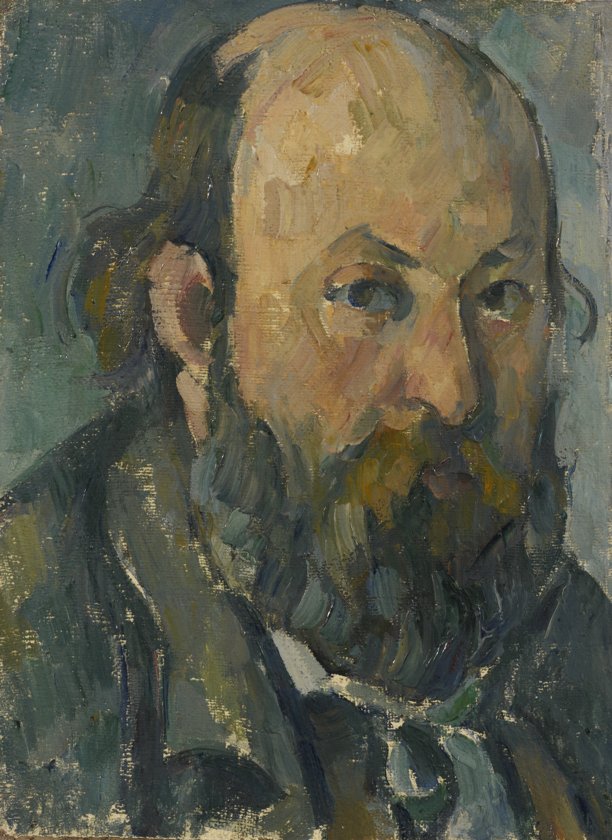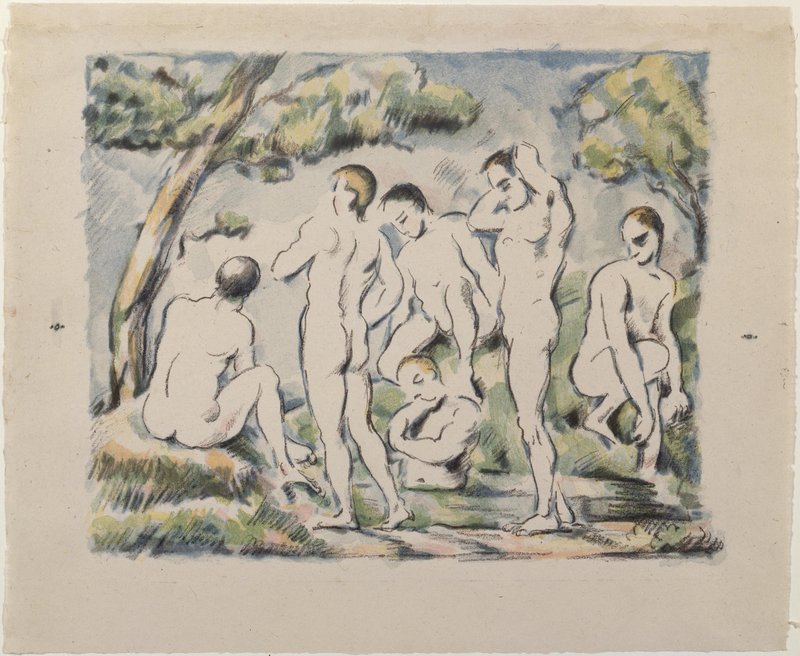Cézanne – Self-portrait

Paul Cézanne, Portrait de l'artiste, 1877–1878
Kunst Museum Winterthur, Hahnloser/Jaeggli Stiftung
Foto: Reto Pedrini, Zürich
Cézanne painted approximately 150 portraits during his lifetime, around a third of which were self-portraits. In contrast to the Impressionists, this makes him a painter who frequently used this means of self-interrogation. Moreover, he was also an inexpensive, patient and always available model. His own image was therefore ideally suited to Cézanne's artistic concerns, allowing him to work on a few constantly recurring motifs – a mountain, an apple or a person.
This self-portrait from the Hahnloser Collection is captivating due to its small format and narrow focus. The artist reduced the portrait to the chest and head, which he has pushed to the upper edge of the picture in a classic three-quarter profile.
It was Giovanni Giacometti who first drew Hedy and Arthur Hahnloser's attention to Cézanne. He told them about the retrospective that was organised in Paris in 1907 and which really made the French artist famous throughout the art world merely a few years after his death. Arthur wrote a postcard from Paris to his painter friend from Graubünden: "Kind regards from Paris. We too are full of admiration for Cézanne." The first spark had been ignited.

Paul Cézanne, Les baigneurs (petite planche), 1896–1897
Farblithographie
Kunst Museum Winterthur
Foto: Jean-Pierre Kuhn, SIK-ISEA, Zürich
Nevertheless, initially Hedy and Arthur Hahnloser were hesitant in their approach to Cézanne's painting. As they had done with other artists such as Bonnard and Vuillard, they did not acquire any paintings at first, but only a few works on paper, the first of which were purchased around 1912/1913 from the legendary art dealer Ambroise Vollard in Paris: a small bundle of colour lithographs, the Baigneurs. The Hahnloser couple bought several copies so that they could also donate one or two to the art museum. Even before the outbreak of war, they were able to acquire their first watercolour by Cézanne, a still life, in Munich.
However, as enthusiasm for Paul Cézanne grew, his works became increasingly difficult to obtain and afford. Thanks to their good connections, Vollard sent a whole crate of paintings by Cézanne to the Villa Flora after the end of the war. However, Hedy and Arthur Hahnloser could not afford all of them and so they arranged for a few to become part of Arthur's brother Emil's collection. At that time, also Richard Bühler and Georg Reinhart, both board members of the Kunstverein, also collected works by Cézanne. Thus they were constantly inspiring one another – but were also always a bit in competition with each other. Arthur wrote to Richard Bühler: "Now you have your Cézanne! What a rivalry! I hope we don't get into each other's hair!"


